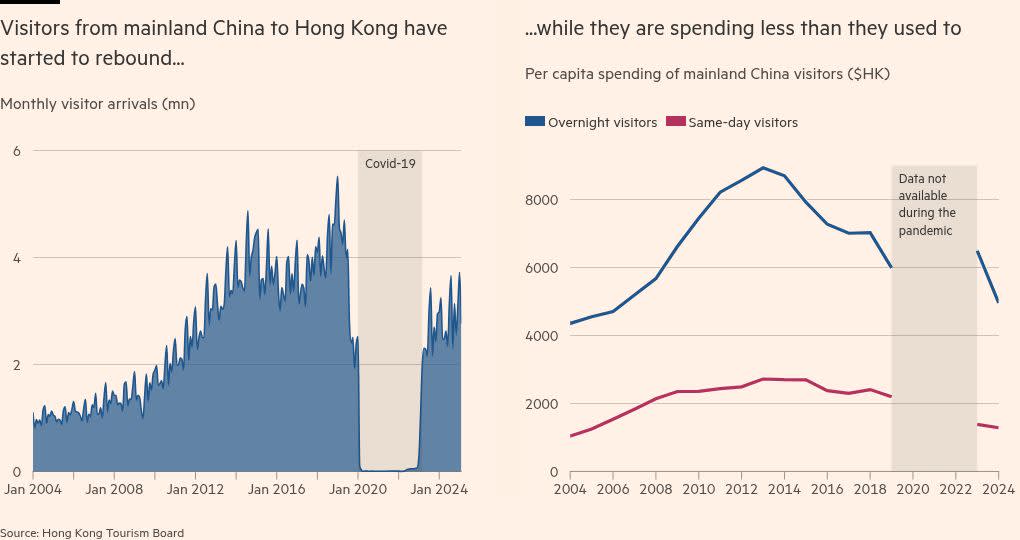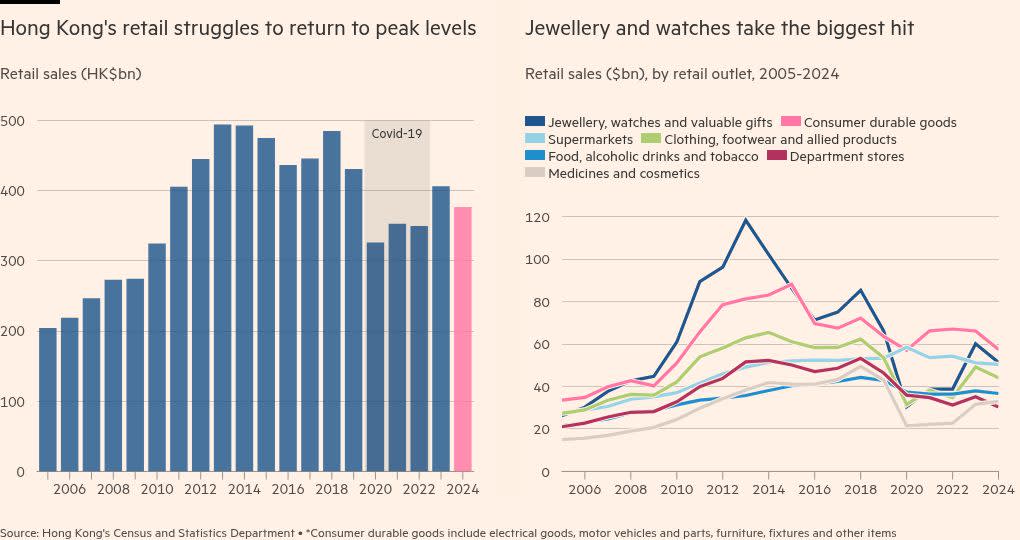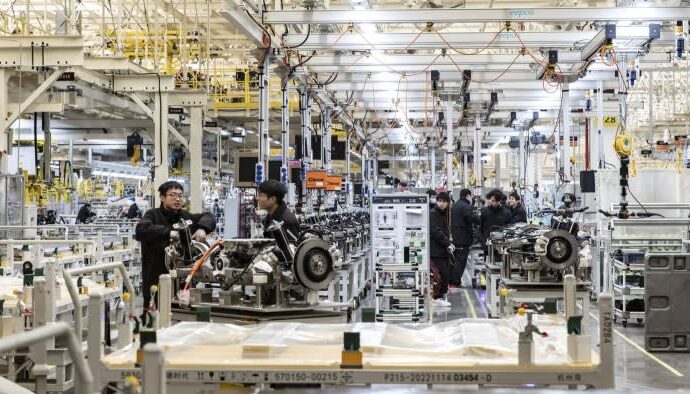Unlock the Editor’s Digest for free
Roula Khalaf, Editor of the FT, selects her favourite stories in this weekly newsletter.
When Carol Wang, a 21-year-old from eastern China, whizzed into Hong Kong to catch the sights, she stayed for just one day and spent barely HK$400 (US$51), preferring to eat and sleep across the border in neighbouring and cheaper Shenzhen.
“We call ourselves special forces travellers,” she said, referring to often young day-trippers who challenge themselves to pack as many points as possible into a brief itinerary, helped by tips shared on China’s Instagram-like Xiaohongshu app.
She was among the more than 910,000 mainland Chinese residents who made the trip to Hong Kong during the five-day Labour day holiday in May, the highest tally since before the Covid-19 pandemic.
But beneath those bumper numbers, the city’s tourism industry is struggling. Tourists are spending less, as cost-conscious day-trippers such as Wang replace luxury shoppers, squeezing revenues for the Asian financial hub’s retail, restaurant and hotel sectors.
There has been a “structural shift” among mainland Chinese travellers, said Gary Ng, senior economist at Natixis. “People just don’t stay as long and spend as much.”
Much of the shift is due to China’s slowing economic growth. A years-long property sector crisis has weighed down on the country’s middle class, analysts said. This has had an impact on Hong Kong, where travellers from the mainland account for more than 75 per cent of tourist arrivals.
Overall, the number of tourists keep rising. Hong Kong welcomed more than 34mn visitors from China last year, a 27 per cent increase over 2023.
But more than half of those were day-trippers who spent an average of just HK$1,300 (US$166), down from HK$2,400 in 2018, official data showed. Tourism’s contribution to Hong Kong’s economy shrank from 4.5 per cent in 2018 to 2.7 per cent in 2024, according to Natixis estimates.
Sales of jewellery and watches in Hong Kong — a proxy for luxury sales — fell 12 per cent in the first quarter of 2025 compared with a year earlier, according to official data. Total retail sales fell more than 6 per cent.
Many Chinese tourism operators have pivoted to offering single-day group tours for as little as Rmb138 ($19), including lunch and transport. Overseas Tour China, a Shenzhen-based agency, told the Financial Times that the day trips were its most popular service, as tourists increasingly prioritised low-cost sightseeing over luxury shopping.
Self-identified special forces travellers are also sharing cost-saving tips on Xiaohongshu, such as sleeping at free public campgrounds or even 24-hour McDonald’s locations.
Hong Kong’s Sikh temple — which offers free vegetarian meals and lodging to those in need — has attracted tourists as a “zero-cost hack”. Baljinder Singh, a temple official, said that while visitors were welcome, it was “not a hotel”.
Becky Lam, a shop assistant at a jewellery store in the waterfront Tsim Sha Tsui district, which is popular with tourists, said sales had plunged more than 80 per cent from a peak in 2018, despite discounts of up to 70 per cent on jade, pearls and watches. “Nowadays, most of the mainland visitors to Hong Kong don’t have much spending power,” she said.
“There’s no doubt we’re seeing a shift in tourist behaviour,” said Girish Jhunjhnuwala, chief executive of Ovolo Hotels group, where occupancy rates averaged 60 to 70 per cent last year, down from as high as 88 per cent in 2018.
“This short-stay model,” he said, meant that “while visitor numbers are rising, especially from the mainland, spending — particularly in food and beverages — has significantly dropped”.
Hong Kong’s economy registered 2.5 per cent growth in 2024 after a period of pandemic-related contraction, but economists have warned that tensions between the US and China could drag on that momentum, given the city’s exposure to global trade flows. UBS has forecast Hong Kong’s GDP will rise just 1 per cent in 2025.
Foreign currency fluctuations have also reduced its attractiveness to luxury shoppers. China’s renminbi hit an 18-year low last month against the US dollar, to which the Hong Kong dollar is pegged, raising the costs of such goods for mainland buyers.
Linna Huang, a tourist from Shenzhen in her 30s, said she previously visited Hong Kong regularly to buy high-end items, but had stopped doing so as prices were now similar to those in mainland China. “I’d rather make these purchases in Shenzhen,” she said.
Officials this week rolled out a tourism drive highlighting low-cost attractions such as hiking trails, tours of food manufacturers and a British colonial-era police station.
“With increased [numbers of] people and popularity, there will be increased [spending],” said tourism and culture secretary Rosanna Law.
Wang is less sure.
“Maybe we will buy some snacks as souvenirs back home,” said Wang. “But we certainly have no plans to buy any luxury goods.”
Data visualisation by Haohsiang Ko




